
Wine
Chablis: Pure Character
In the world of wine, there are few regions that are characterised by a single variety.
Riesling defines the steep slopes of the Mosel, for Italy’s Barolo, it’s Nebbiolo, and New Zealand’s Marlborough region owes its fame to Sauvignon Blanc. One could even argue that the same could be said of the Barossa and Shiraz.
However, there’s only one place that’s dedicated to just one variety: Chablis. But Chablis isn’t just a region, it’s also a style and the name of the town at the centre of it all. Made exclusively from Chardonnay, Chablis is pure, flinty, saline, utterly delicious and is revered the world over for its ability to directly reflect its ‘terroir’…but more on that later.
The region of Chablis sits two hours south-east of Paris and represents the most northern part of Burgundy. It’s often referred to as the Cote d’Or (Gold Coast) for the Pinot Noir and Chardonnay treasures that come from the limestone slopes running north to south from Dijon through Beaune to Santenay.
Like in much of France, the Romans brought vines with them in the first century, but in the 12th, Cistercian monks planted Chardonnay along the banks of the Serein River and from there the variety spread throughout the region.
As a town, Chablis was eventually established on the Serein and like France itself, suffered occupations and wars of every kind. In the 1500s, however, its direct connection to Paris via the Seine and Yonne Rivers meant that Chablis was the closest wine region to the capital and soon established itself as a favourite with kings and nobility.
While the wine style of Chablis flourished, unlike its neighbouring wine-centre cousins of Beaune and Dijon, the town of Chablis did not grow. Instead, it remained small, humble and dedicated to its namesake.
Quiet Charm
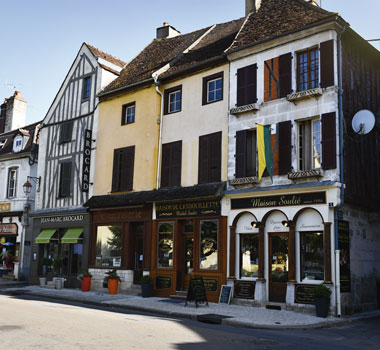
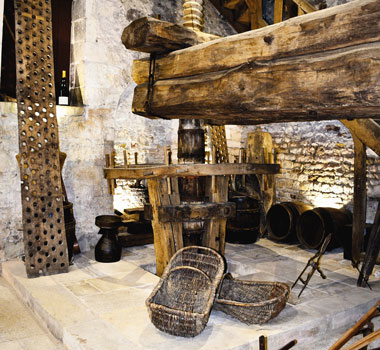
Pictured above (from left to right): The streets of Chablis; The ancient press in the Obédiencerie.
Chablis does not spruik itself as a tourist centre and this fact contributes significantly to its charm. It is a classic French medieval village, complete with stone cottages that have somehow aged and melded into each other. Ivy has taken over the side of houses, turning grey into green, while flowers are abundant and 200-year-old oaks and willows frame even older churches and monuments.
Treasures and relics
The village of Chablis dates back to 867AD and although not all of it has survived, there is plenty left to explore. One of
its essential visits is the Collegiate Church of Saint-Martin and the Obédiencerie.
This 13th century church was built in honour of a Hungarian born Roman officer who became a monk. He was canonised for tearing his cavalry cape in half to give to a cold beggar, thus signifying the end of his army duty and the beginning of his religious service.
When Saint Martin died in 397AD, the monks took his body and relics to the town of Tours, but as the Normans began to invade, they were moved to Chablis and kept in
the Obédiencerie, where the local monks lived, prayed and made wine. Part of this incredible old building is an 800-year-old press, which was built by the canons of St Martin, who were the largest and most important winemakers of Chablis from the Middle Ages through to the French Revolution.
For a great tour and tasting, visit Domaine Laroche, who inhabit the oldest building in Chablis right next door to the Obédiencerie. The family, whose winemaking history in Chablis dates back to 1850, have converted an 18th century mill into a lovely hotel that sits directly over the Serein River.
There are plenty of underground cellars attached to restaurants and these Maison des Vins can be accessed from the street, with each holding their own set of relics and history.
Wines of Terroir
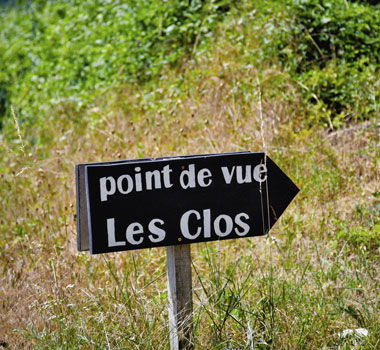
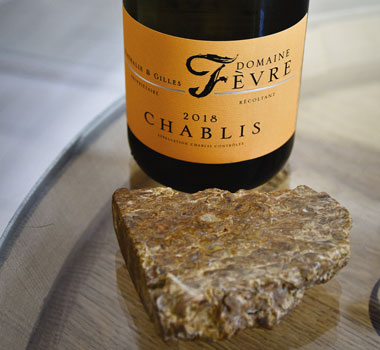
Pictured above (from left to right): Vineyard directions; Tasting terroir at S.Chablis Valour-Lemaire.
The wines of Chablis are all about purity and if you are in the ‘too big is too much’ camp when it comes to Chardonnay, Chablis is likely to appeal to your palate.
Given the region sits on the very northern edge of Burgundy, ripeness can be a challenge as spring frosts have the potential to severely diminish crop levels. But it is this ‘just ripe’ expression of Chardonnay that drives its purity and is the very thing that people fall for.
The French have a word they use to bind all of the factors that contribute to a finished wine together. The meaning of the term terroir can be as philosophical and pervasive as it is broad. But, when it comes to understanding the concept of terroir, no other wine expresses it quite like Chablis.
Described in the 13th century by Cistercian monks as ‘spring water on sunlight’, Chablis’ flavours are clean, fresh and characterised by a taut and sometimes steely mix of citrus, just-ripe stone fruit and white flowers. Chablis can also present a chalky, salty minerality that is due to the unique mix of 150-million-year-old Kimmeridgian and Portlandien (fossil/clay, marl/limestone) soils that were once a prehistoric seabed.
On paper this all sounds a little odd and unappealing, however, this unique mix of terroir-driven factors work and the results, from the bottom to the top of the quality scale, are simply delicious.
Layers of Lovely
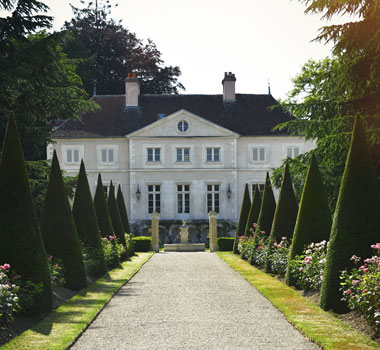
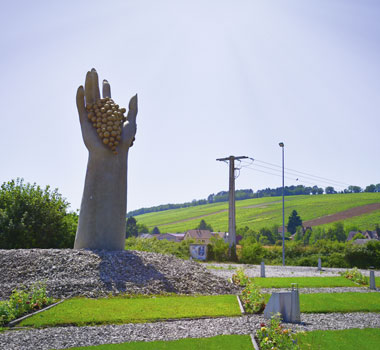
Pictured above (from left to right): The impressive courtyard of Albert Bichot and Domaine Long-Depaquit; The Hand of Chablis.
Chablis quality is broken down into four distinct bands known as ‘Appellations’. At the top you have Grand Cru, followed by Premier Cru, or ‘1er Cru’, then Chablis and Petit Chablis. Grand Cru covers 1.1 percent of the total and represents incredible value when it comes to complexity, weight, structure and price.
1er Cru is about 9 percent of the total and is where you will find the greatest diversity of terroir expression. Chablis is the workhorse appellation, making up 83 percent of the total and is amazing value for money. Petit Chablis at 6.6 percent of the pie represents the rest and comes from vineyards that sit just outside the traditional vineyard areas on the plateaus above the valleys.
Petit Chablis can be quite good, with the unofficial guidelines being, “Petit Chablis is for drinking with strangers, Chablis you open when friends come round, Premier Cru is for when you have family and Grand Cru is for you to share with just your partner…or when they have gone to bed.”
Delicious Discovery
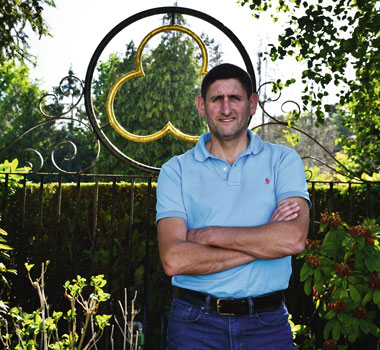
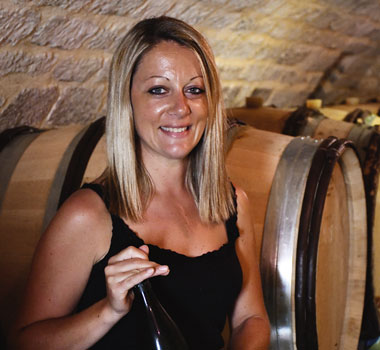
Pictured above (from left to right): Didier Séguier of Domaine William Fevre; Charlène Lamblin from Domaine Pinson.
You have plenty of options when it comes to producer visits in Chablis, most have cellars in town within walking distance and you can easily get lost for a few days tasting and exploring.
Try Domaine Pinson, run by a father, uncle and daughter team Laurent, Christophe and Charlène, lovely people, lovely wines. Domaine Raoul Gautherin et Fils is a great producer with eight generations of history behind winemaker Adrien Gautherin. At Domaine Long-Depaquit, housed in the stately grounds of Burgundy powerhouse Albert Bichot, winemaker Cecilia Trimaille is producing a tidy folio of expressive wines.
A visit to William Fevre is a must. Chief Winemaker Didier Séguier sits across a folio that consists of six Grand Cru, eight 1er Cru, six Chablis and two Petit Chablis. The range is as incredible as it is consistent – so much so that he was awarded the 2018 International Wine Competition’s White Winemaker of the Year.
If you’re short on time, but want to get a good understanding of the style, head to S.Chablis Valour-Lemaire at 8 Rue Auxerroise in the centre of town. Run by Arnaud Valour, this is a small wine bar and wine shop that will set you up with guided flights of wines that cover a good spread of appellations, vineyards and producers. Arnaud’s English is great and he matches everything with local cheese, bread and charcuterie.
For any lover of wine and lovely French things, Chablis – both the destination and the wine – should be added to your list of must-do experiences.